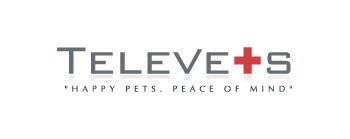 Congenital Portal Shunts are due to a defect in the blood circulation around the liver. Instead of blood entering the liver to be detoxified, the liver is bypassed. The liver usually eliminates toxins derived from the gut. With a porto-systemic shunt, there is a bridging between the veins around the liver and so the toxic material bypasses the liver, causing an elevation of ammonia in the circulation.
Congenital Portal Shunts are due to a defect in the blood circulation around the liver. Instead of blood entering the liver to be detoxified, the liver is bypassed. The liver usually eliminates toxins derived from the gut. With a porto-systemic shunt, there is a bridging between the veins around the liver and so the toxic material bypasses the liver, causing an elevation of ammonia in the circulation.This defect may be within the liver (intrahepatic) or occur outside of the liver (extrahepatic) - most are single vessels.
Shunts can be congenital (present at birth) or acquired. Acquired shunts can develop subsequent to portal hypertension (high blood pressure); typically they are multiple in nature. This occurs due to a lack of valves in the portal vein, permitting circulatory accommodation through the shunt. Portal hypertension is usually associated with liver scarring or cirrhosis.
The shunt may lead to episodic development of hepatic encephalopathy (seizures or bizarre behavior) associated with ingestion of high protein food, and administration of certain drugs.
Another effect of the shunt is the development of bladder stones due to inability of the liver to metabolise uric acid from the blood.
SYSTEMS AFFECTED
Nervous system signs include episodic hepatic encephalopathy (seizures).
Gastrointestinal signs are intermittent inappetence; vomiting; diarrhea; pica; drooling in cats.
Urogenital signs bladder stones and or large kidneys
GENETICS
Basis unknown
Breeds predisposed include miniature schnauzers; Irish wolfhounds; Old English sheepdogs; cairn terriers; Yorkshire terriers
INCIDENCE/PREVALENCE
Incidence is greatest in purebred dogs and mixed breed cats
Especially common in Yorkshire terriers
CLINICAL SIGNS
Episodic seizures or disorientation (hepatic encephalopathy) may be noted.
Affected cats may drool. This may be initially confused with an upper respiratory infection based on the display of increased salivation.
Initial signs usually noted at initial feeding of puppy or kitten food and stunted growth is common
SYMPTOMS
CNS Signs: Episodic weakness, pacing, disorientation, head pressing, blindness, behavioral changes (aggression, vocalization, hallucinations), seizures, coma
Gastrointestinal Signs: inappetence, vomiting, diarrhea
Urinary Signs: bladder stones
Congenital disease –The pets may have a normal appearance or have stunted stature, hepatic encephalopathy, golden or copper irises in non- blue-eyed and non-Persian cats.
DIFFERENTIAL DIAGNOSES
CNS signs -Other rule outs include infectious disorders (e.g., FIP, canine distemper, toxoplasmosis, FeLV-related infections); toxicities (e.g., lead, mushrooms, recreational drugs); hydrocephalus; epilepsy; metabolic disorders (e.g., severe low blood sugar).
Gastrointestinal signs—bowel obstruction; dietary indiscretion; foreign body ingestion; inflammatory bowel disease
Urinary tract signs—bacterial urinary tract infection; stones
DIAGNOSIS
Lab Work
CBC/Biochemistry: low BUN, creatinine, glucose, and cholesterol common; liver enzyme activity variable (ALP usually high in young patients owing to bone isoenzyme); bilirubin normal with congenital but may be high with acquired shunts.
Urinalysis: Decreased urine specific gravity (inability of kidneys to work properly) and crystals in the urine.
Total serum bile acids—sensitive indicators; random fasting values may be within normal reference range; 2-hr postprandial (post feeding) values markedly high (usually > 100 mmol/L)
Blood ammonia values—sensitive indicators; less reliable than total serum bile acids because of analytic problems
Ammonia tolerance testing—more reliable than random ammonia values; samples cannot be stored, frozen, or mailed for analysis.
Imaging
Abdominal Radiography: Small liver, Large kidneys, Bladder stones
Injecting radiographic contrast media into a mesenteric or spleenic vein. This is the test of choice, but is technically difficult.
Abdominal Ultrasonography: Subjective estimation of small liver, hypervascularity, and observation of the shunting vessel. Color-flow Doppler—assists in shunt localization. Intrahepatic shunts are most easily imaged.
Acquired Shunts
Liver size depends on underlying cause.
Abdominal fluid is easily detected.
Ammonium urate calculi (stones) in the kidney or bladder
TREATMENT
Eliminate causal factors—dehydration; elevated kidney toxins; gastrointestinal bleeding; high- protein foods; infection (urinary tract, other); treatment with certain drugs
Protein-restricted diet—dogs: dairy and soy protein may perform better than meat and fish proteins; cats: require balanced, meat-based protein.
Increase dietary protein tolerance by concurrent treatment with lactulose (0.5–1 mL/kg PO q8–12h; dose based on production of two to three soft stools daily), metronidazole (7.5 mg/kg PO q8– 12h), and/or neomycin (22 mg/kg PO q12h).
Cleansing enemas with warmed isotonic fluids— until free of feces
Retention enemas—15 mL/kg; with lactulose (1:2 dilution with water) and neomycin (10–15 mg/kg)
SURGICAL CONSIDERATIONS
Surgical ligation with congenital disease
Goal: total ligation vessel; often only partial ligation can be performed safely and surgical assessment of extent of ligation may be inaccurate.
Hepatic encephalopathy signs must be resolved before surgery. Intrahepatic shunts are most difficult to ligate.
This article was donated by the Columbia Animal Hospital. For further information please visit http://www.petshealth.com/
.gif)
No comments:
Post a Comment